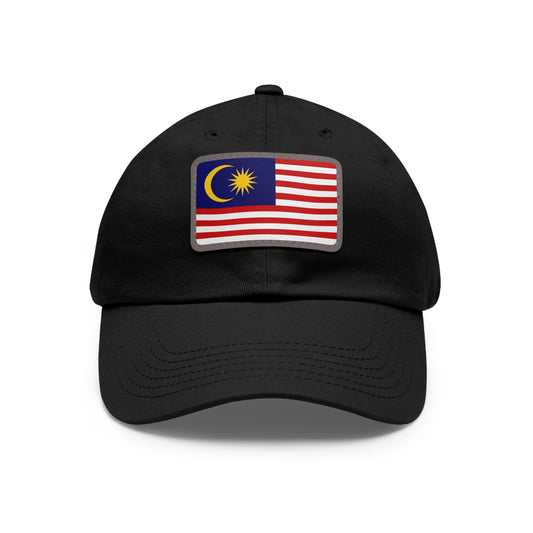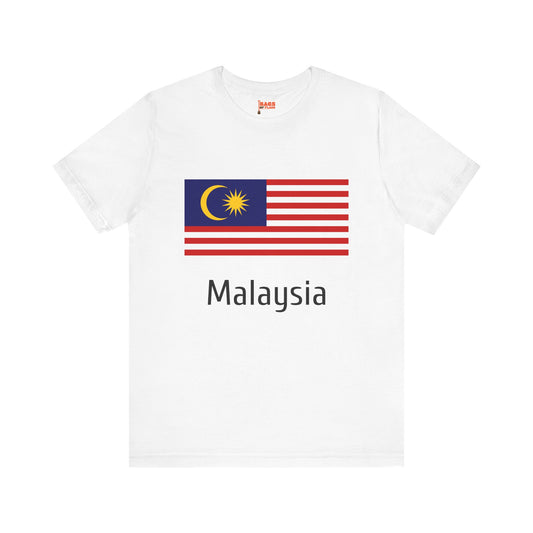-
Malaysia Sweatshirt
Regular price $34.15 USDRegular priceUnit price / per -
Malaysia Flag Sweatshirt
Regular price $34.15 USDRegular priceUnit price / per -
Malaysia Pillow
Regular price $22.65 USDRegular priceUnit price / per -
Malaysia Leather Patch Hat
Regular price $18.85 USDRegular priceUnit price / per -
Malaysia Mug
Regular price $11.65 USDRegular priceUnit price / per -
Malaysia Trucker Cap
Regular price $14.90 USDRegular priceUnit price / per -
Malaysia Hoodies
Regular price $34.40 USDRegular priceUnit price / per -
Malaysia T-shirts
Regular price $22.79 USDRegular priceUnit price / per -
Malaysia Flag on Hoodie
Regular price $34.40 USDRegular priceUnit price / per -
Malaysia Flag on T-shirt
Regular price $22.79 USDRegular priceUnit price / per
Collection: Malaysia
The Malaysia flag is a symbol of pride and unity for the nation. Its design and colors hold deep meaning for the Malaysian people, representing their history, culture, and values. We will delve into the fascinating story of the Malaysia flag, exploring its design, historical context, symbolism, current relevance, and lesser-known facts.
Overview of the Malaysia Flag

The Malaysia flag, known affectionately as "Jalur Gemilang," showcases a striking design rich in symbolism and national pride. Featuring 14 alternating red and white stripes, this vibrant pattern symbolizes the collective spirit and unity of the country's 13 states and the federal territories. Anchoring the flag on the upper left corner is a blue canton, housing a radiant yellow crescent and a dazzling 14-pointed star, the "Bintang Persekutuan." This configuration is not merely decorative; it reflects core values and principles central to the Malaysian identity.
The color palette is thoughtfully chosen: red stands for courage and resilience, white for purity and honesty, blue for unity and harmony among the diverse populace, and yellow for the sovereignty of the monarchs and the nation's prosperity. Together, these elements encapsulate the essence of Malaysia, weaving a narrative of unity, religion, and governance while standing as a beacon of hope and pride for Malaysians everywhere.
Historical Context of the Flag
The journey to adopting the Malaysia flag, as we know it today, began with the nation's formation on September 16, 1963. This date marks the unification of Malaya, Singapore (which later became independent), North Borneo (now known as Sabah), and Sarawak into the Federation of Malaysia. The flag draws inspiration from the banner of the Federation of Malaya, signifying continuity and a new chapter in the nation’s history. Initially, the Malayan flag featured 11 stripes and a star with 11 points, representing the states in the federation.
However, with the formation of Malaysia, this design evolved to include 14 stripes and a 14-point star to account for the additional states and territories. This change was not merely cosmetic but represented a deep commitment to unity and inclusivity amongst Malaysia's diverse components. Over the years, the flag has stood as a witness and participant in the country's evolving political and social landscape. Its adoption was more than a ceremonial event; it was a declaration of Malaysia's identity and aspirations on the world stage. Through times of change and challenge, the flag has remained a constant symbol of the nation's ideals, aspirations, and unity, encapsulating the essence of Malaysia’s journey from a collection of territories to a singular, sovereign nation.
Symbolism Behind the Malaysia Flag

Each element of the Malaysia flag is rich with meaning, serving as a visual representation of the nation's ideals and aspirations. The 14 alternating red and white stripes symbolize equal partnership and harmony among the federation's states and federal territories, underscoring the importance of unity and cooperation in the country's governance and societal structure. The blue canton symbolizes a united Malaysian people, reflecting the nation's commitment to peace and harmony amidst its diversity.
At the heart of the canton lies the yellow crescent, a symbol of Islam, reflecting the significance of the religion as a guiding principle in the country's national philosophy and governance. Complementing the crescent is the 14-pointed star, or "Bintang Persekutuan," representing the 14 states and territories federation. Each point of the star stands for the values and principles that bind the Malaysian people together, including belief in God, loyalty to the King and country, upholding the constitution, rule of law, good behavior and morality, and respect for the rights of all individuals and communities. These symbols collectively convey a message of unity, belief, and national pride, binding the Malaysian people together under a standard banner.
Current Relevance of the Malaysia Flag
Today, the Malaysia flag continues to be a potent symbol of national unity and pride, prominently featured in various settings, from grand national celebrations like Merdeka Day and Malaysia Day to everyday sightings atop government buildings, educational institutions, and military facilities. It also plays a crucial role in international events, representing Malaysia on the global stage in sports competitions, diplomatic engagements, and cultural exchanges. Beyond its ceremonial usage, the flag fosters a sense of identity among Malaysians, reminding them of the country's rich heritage and shared values.
While there have been discussions and occasional debates over aspects of the flag’s design and interpretations, these conversations underscore the deep connection and reverence Malaysians hold for their national symbol. In recent years, social media campaigns and public initiatives promoting flag etiquette have highlighted the flag’s significance in cultivating national pride and consciousness among the youth and the general populace, reinforcing its relevance in contemporary Malaysian society.
Additional Facts and Flag Etiquette
Flag etiquette surrounding the Malaysian flag is steeped in tradition and respect. It is paramount that the flag is always displayed in a prominent position and never in a state of disrepair. When displayed alongside other flags, the Malaysia flag must be raised the highest, symbolizing the nation's sovereignty and pride. The flag is flown at half-mast during national mourning periods as a sign of respect and mourning, except on certain occasions where protocol may differ.
The flag is hoisted daily from sunrise to sunset in educational settings and public buildings, embodying the nation's vigilance and honor. The flag must be illuminated if displayed at night, ensuring its emblematic presence is respectfully visible at all hours.
Handling the Malaysian flag comes with its own set of protocols. It should never be used as a drapery, a covering for tables, or for any decoration implying disrespect. The flag must not be defaced or altered in any way, maintaining the integrity of its design and the values it represents.
An interesting anecdote about the flag is its nickname, "Jalur Gemilang," which translates to "Stripes of Glory," reflecting the Malaysian people's collective spirit and enduring strength. This nickname was officially adopted in 1997, adding another cultural significance to the flag’s identity and its role in unifying the nation.




















